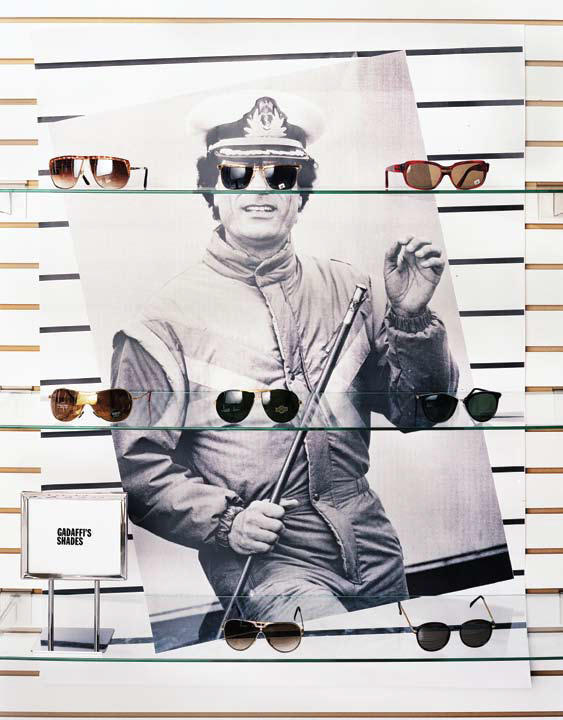
When it comes to eyewear, the prudent despot opts for something chunky. After all, glasses traditionally bespeak physical frailty, and what better way to defy such astigmatic prejudices than with a pair of wide-rimmed, rectangular frames so in-your-face as to virtually dare onlookers to call you four-eyes?
Two proponents of this approach — Kim Jong Il and Robert Mugabe — traditionally chose glasses so unfashionable as to be menacing. Such was the girth and depth of their giant optic scaffolds that they suggested the thickness and broadness of bulletproof glass. Similarly, the sharp-edged, horn-rimmed glasses of Mobutu Sese Seko, the late dictator of Zaire, seemed to invoke every awful possibility of spear and bone.
Recently, however, there has been a wavering on the bridges of tyrants’ noses. Mugabe has moved toward more modest wire frames, and Kim has been photographed without any glasses at all. Mirror shades, once so prevalent among South American dictators, gleam only in the darkness of that continent’s memory. Nowadays innovations in totalitarian eyewear perch solely on the enigmatic beak of Muammar al-Qaddafi.
Qaddafi’s spectacles have always been spectacles. On the billboards of Tripoli he appears wearing a variety of boxy frames with octagonal lenses, rounded frames with teardrop lenses, mirrored metal and colored plastic, as if the brightness of his nation’s sun demanded that even the visage of his image be protected. In international publications, such as Klaus Zwangsleitner’s Official Portraits (2004), Qaddafi stares imperiously at the viewer from behind a pair of blue-tinted, gold-rimmed glasses that are both precious and strangely unsettling. In public appearances the sunglasses are there, too. A recent meeting with Nicolas Sarkozy saw him offset his white tuxedo and black silk shirt with a pair of large black frameless glasses sporting a prominent gold nose bridge. Earlier this year, on a road trip through Africa, he was seen wearing rainbow-tinted sunglasses, and when encountering Tony Blair in 2004, he played to the desert landscape with a pair of strikingly ornate gold frames.
Why does Qaddafi change his eyewear? Politicians, especially those with total authority, rarely fiddle with their image, lest it undermine their cult of personality. (In dictatorships, familiarity breeds consent.) So perhaps Qaddafi uses his sunglasses to send out political messages. His rainbow-tinted lenses clearly suggested that he sees his country as the northern equivalent to South Africa, the continent’s self-styled “rainbow nation.” But such correspondences are not always clear. Maybe his prescription keeps changing. Maybe he keeps sitting on them — we’ve all been there — or maybe it’s just that frequent stylistic shifts are natural for a man with a penchant for pink robes, scarlet epaulets, and beige scarves, a wardrobe that a lesser soul, with a lesser secret-police force, might shrink from wearing. Remember, this is a man who engineered a coup d’état from the back of a turquoise Volkswagen Beetle.
It is true that while Bono has his wraparounds, John Lennon had his tea shades and Jacqueline Onassis her Jackie O’s, there are no signature Qaddafi glasses. His tastes are too protean for any one style to stick. Yet this very shifting of facades has become the defining feature of his own mercurial image — enemy of the West, friend of the West, advocate of Arab unity, advocate of African unity, aviator, wayfarer. His sunglasses conceal nothing. They reveal him. His capricious nature is reflected in the ever-changing fashions of his face. No point trying to peer behind the glasses: the real Qaddafi can be found in the shades.